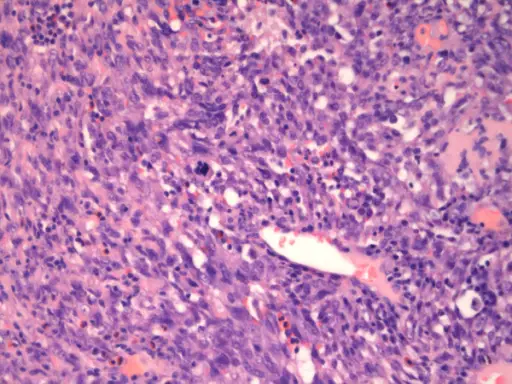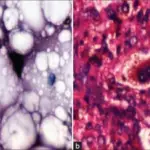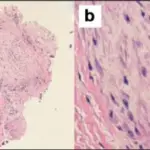Angiosarcoma is a rare malignant vascular neoplasm of endothelial-type cells that line vessel walls.
What is the Pathology of Angiosarcoma?
The pathology of Angiosarcoma is:
-Etiology: The causes of angiosarcoma include exposure to vinyl chloride monomer (VCM) for prolonged periods, polyvinyl chloride (PVC) polymerization plants, arsenic-containing insecticides, and thorium dioxide irradiation.
-Genes involved: PTPRB/PLCG1.
-Pathogenesis: The pathogenesis of angiosarcoma is characterized by a rapid and extensive infiltrating overgrowth of vascular endothelial cells.
-Histology: The histology associated with angiosarcoma shows irregular anastomosing vascular spaces lined by endothelial cells.
How does Angiosarcoma Present?
Patients with angiosarcoma typically affect males more than females present at the age range of 40-75 years. The symptoms, features, and clinical findings associated with angiosarcoma show bruised, purple-ish areas on the skin.
How is Angiosarcoma Diagnosed?
Angiosarcoma is not diagnosed through MRI and CT scans.
How is Angiosarcoma Treated?
Angiosarcoma is treated by complete surgical resection with wide margins for local and locoregional disease in combination with preoperative or postoperative radiotherapy.
What is the Prognosis of Angiosarcoma?
The prognosis of angiosarcoma is generally poor. The 5-year survival rate of patients with angiosarcoma is approximately 12-33%.



